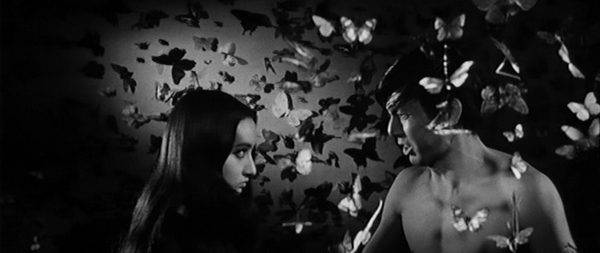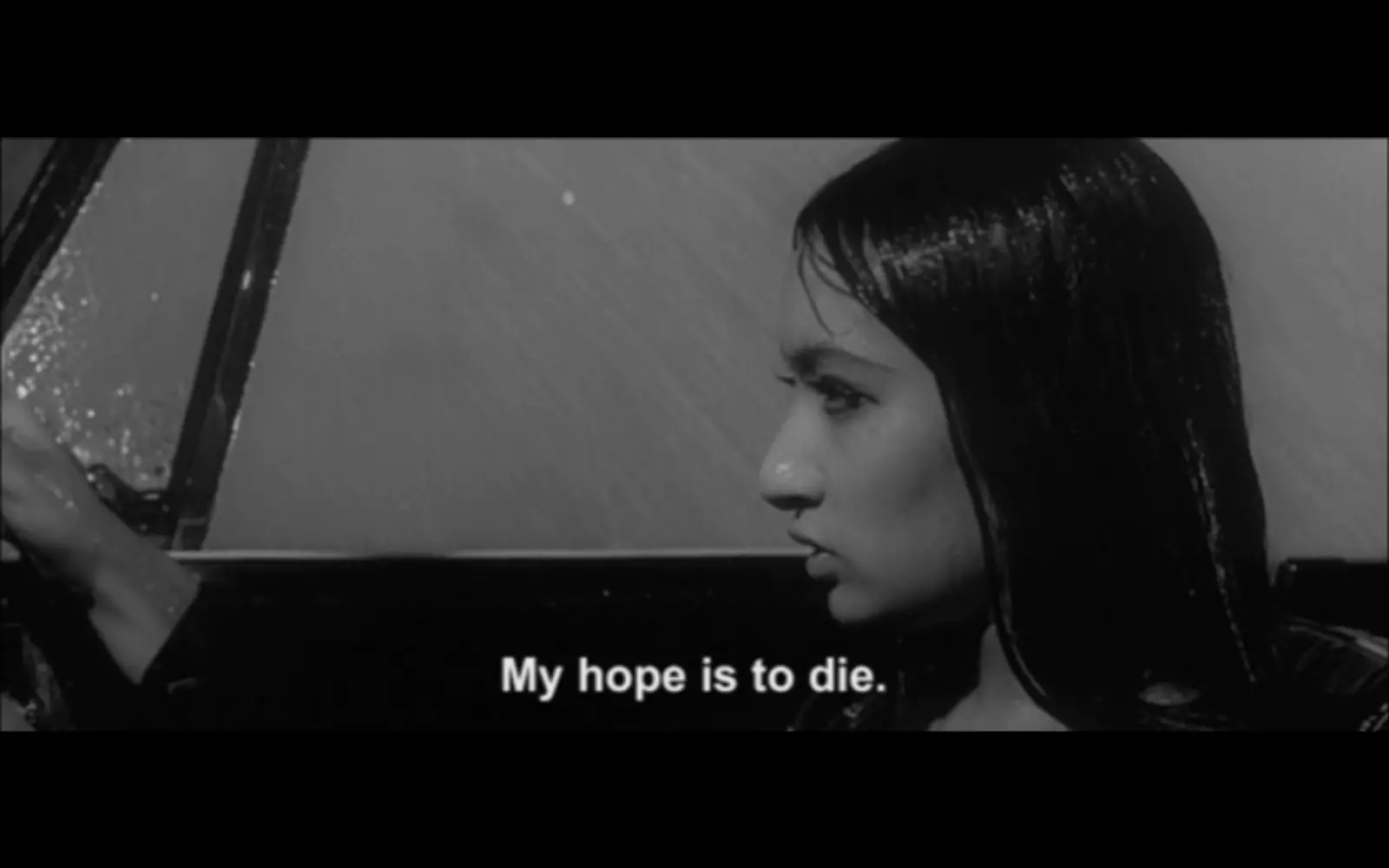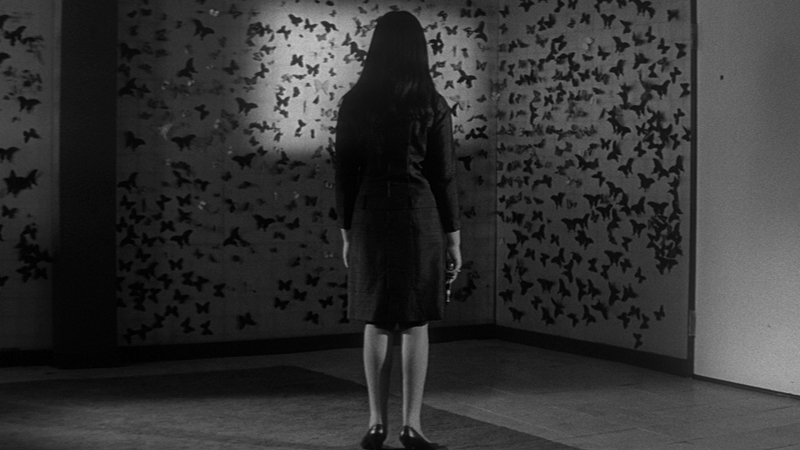Branded to Kill (殺しの烙印)
Director: Seijun Suzuki
Country: Japan
Year: 1967
“Branded to Kill” (The Criterion Collection) on Amazon.
Seijun Suzuki was as an eccentric character, a filmmaker who was indeed ahead of his time. His brilliance, however, didn’t simply generate from his exceptional artistic vision, but was also affected by the suppressive environment that Suzuki was working within. There is no doubt that Suzuki would have delivered equally breathtaking material in different circumstances, however, it is important to note that Suzuki’s masterful Branded to Kill (1967) was clearly his response to an unappreciative system that he was contracted to. This essay will revisit the ‘Seijun Suzuki Problem’1 in relation to national Japanese cinema, discussing how Branded to Kill was affected by Nikkatsu’s treatment of Suzuki, examining how the film’s use of visuals and narrative expressed the director’s emotions at the time, and finally to explain how Branded should be regarded an important gateway for the next generation of New Wave Japanese filmmakers.
In terms of visuals and style, Suzuki has already proven himself as a respected artist even before making Branded to Kill, his prior film Tokyo Drifter (1966) has already played around with the conventions of the Yakuza film. Contracted by Nikkatsu (A studio specialized in mostly Yakuza films at the time) as a B picture film director to make at least three films annually, Suzuki still managed to cast a unique touch on many of his films. According to Daisuke Miyao in his essay on Branded to Kill, ‘Suzuki was allowed neither to select his scripts and titles nor to make use of Ishihura Yujiro, Nikkatsu’s most famous star at the time.’2 As a result of these restrictions, Suzuki seemed to have gradually develop an artistic style of his own. Branded to Kill was a special case, not only because Nikkatsu fired him after allegedly making ‘incomprehensible films’3, but also because it was extremely experimental compared to his previous films. As any talented director, Seijun Suzuki felt the need to push the limits of film. In an interview with Mark Schilling, in The Yakuza Book, Suzuki stated:
I did want to make a new type of Nikkatsu film. To be brief, I wanted to kill off the hero. I finally shot it so you couldn’t tell whether he was alive or dead at the end. In Japanese films then you couldn’t kill off the hero, but I tried to come as close as I could.4
Suzuki certainly didn’t think as most of the contracted directors thought at that time. To him, the definition of entertainment was different. ‘Neither Hori [the president of Nikkatsu] nor general audiences expected Branded to be anything other than a B Picture.’5 There was an established audience for the Yakuza films at that time in Japan (especially young audiences), however, it was unusual to blend the avant-garde with the Yakuza film (which is what Suzuki revealed in Branded to Kill) since the avant-garde was a niche genre.
In many ways, Branded to Kill reflected many emotions that Suzuki was experiencing at the time. The plot can be summarized as the story of the No.3 killer in Japan, Hanada, who ends up being hunted by the same corporation who hired him for an assassination that he failed to complete, and within that storyline Hanada desperately tries to move up the hierarchy of killers. Coincidently, I cannot help but see this as a metaphor to how Nikkatsu treated Suzuki. In his essay on Branded to Kill, Tony Rayns explains that the film ‘deconstructs the crime genre’, making the ‘plot take care of itself’. Moreover, Tony Rayns expands on this point later on in his essay stating:
This strategy leaves him free to pursue the visual coups and conceptual surprises that interest him, and, incidentally, to ridicule the aspects of the genre that bore him. It’s the “deconstructive” approach—it sometimes looks more like demolition—which makes it possible to reduce the characters to ciphers and the action to abstraction.6
According to Rayns, as Suzuki abandoned and reconstructed the conventions of the crime genre, he achieved a certain amount of freedom that allowed him to play around with the film itself.
In terms or visuals, Suzuki’s cinematic technique affects the narrative drastically. If we look at Branded to Kill thoroughly, it is not hard to miss how Suzuki uses his cinematic techniques to create a ‘nightmarish, fractured world’ incorporating a mixture of film noir and German Expressionism:
Certainly, Branded is filled with narrative and visual motifs typical of films noir. First, Suzuki’s film uses chiaroscuro monochrome cinematography that emphasizes strong contrast between light and shadow and is arguably derived from the work of German Expressionist directors.7
Miyao argues that Suzuki’s work in Branded can be placed somewhere between film noir and German Expressionism. Miyao further explains the close relation between film noir and the financial difficulties that affected Branded to Kill, stating that the ‘dark surfaces of film noir also came about as a result to the financial limitations imposed upon B pictures’. This could also be seen as a way for Suzuki to interact with a wider audience. Apart from his talent to play around with visuals, it is also interesting to note how Suzuki also used events in the Branded stylistically to express the protagonist’s emotions and psychology. Miyao points out that the protagonist ‘seems to be afraid that he will become unable to resist his fate, or desire, of falling’8, which is why you see Hanada physically heading upwards, whether it was driving up a mountain or escaping on top of an advertising balloon.
Most of the Japanese audiences (who were fans of Yakuza films) at the time were not ready for the big leap that Suzuki had planned for them in Branded to Kill. Nonetheless, Suzuki’s decision to experiment with Branded paved the way for many talented directors after him, most notably Takeshi ‘Beat’ Kitano. Interestingly enough, Branded to Kill can be seen as the precursor of Kitano’s Hana-bi (1997). Kitano’s fragmented Yakuza film is somewhat reminiscent of that of Branded. Luckily, Kitano made Hana-bi at a time where art-gangster films have already been widely appreciated by many audiences. Suzuki himself can be regarded as a precursor of Kitano, both filmmakers deliver outstanding styles of their own within the Yakuza genre while continually pushing conventions.
It is important to note that Suzuki was a filmmaker that was ahead of his time, and that the conventions of Japanese national cinema had affected the way that Suzuki’s films were even viewed by the audience. One should not neglect the fact that Suzuki did have his supporters at the time, who even supported him during his lawsuit against Nikkatsu, yet, one might still wonder about the possibilities of the evolution of Japanese cinema if films, such as Branded to Kill, were nationally widely appreciated at the time.
References:
- Daisuke Miyao. (2007). Dark Visions of Japanese Film Noir. In: Alastair Phillips and Julian Stringer Japanese Cinema: Texts and Contexts. USA: Routledge. 194.
- Daisuke Miyao. (2007). Dark Visions of Japanese Film Noir. In: Alastair Phillips and Julian Stringer Japanese Cinema: Texts and Contexts. USA: Routledge. 195.
- Daisuke Miyao. (2007). Dark Visions of Japanese Film Noir. In: Alastair Phillips and Julian Stringer Japanese Cinema: Texts and Contexts. USA: Routledge. 194.
- Mark Schilling (2003). The Yakuza Movie Book. USA: Stone Bridge Press. 103.
- Daisuke Miyao. (2007). Dark Visions of Japanese Film Noir. In: Alastair Phillips and Julian Stringer Japanese Cinema: Texts and Contexts. USA: Routledge. 195.
- Tony Rayns. (2011). Branded to Kill: Reductio Ad Absurdum. Available: http://www.criterion.com/current/posts/2096-branded-to-kill-reductio-ad-absurdum. Last accessed 11th Nov 2013.
- Daisuke Miyao. (2007). Dark Visions of Japanese Film Noir. In: Alastair Phillips and Julian Stringer Japanese Cinema: Texts and Contexts. USA: Routledge. 196.
- Daisuke Miyao. (2007). Dark Visions of Japanese Film Noir. In: Alastair Phillips and Julian Stringer Japanese Cinema: Texts and Contexts. USA: Routledge. 198.
Other References:
- Stephen Crofts. (2000). Concepts of National Cinema . In: John Hill and Pamela Church Gibson World Cinema: Critical Approaches. UK: Oxford University Press. 1-10.
- David Desser. (1994). Gate of Flesh (Tones): Color in the Japanese Cinema. In: Linda C. Ehrlich and David Desser Cinematic Landscapes. USA: University of Texas Press. 299-321.
- Keiko Iwai McDonald. (1992). The Yakuza Film: An Inrtoduction. In: Arthur Nolletti and David Desser Reframing Japanese Cinema . USA: Indiana University Press. 165-192.
Filmography:
- Branded to Kill, 1967. [DVD] Seijun Suzuki, Japan: Yume Pictures.
- Tokyo Drifter, 1966. [DVD] Seijun Suzuki, Japan: Second Sight.
- Hana-bi, 1997. [DVD] Takeshi Kitano, Japan: Momentum.
- Violent Cop, 1989. [DVD] Takeshi Kitano, Japan: Tokyo Bullet .
- Sexy Beast, 2000. [DVD] Jonathan Glazer, UK: 4DVD.
- Sonatine , 2000. [DVD] Takeshi Kitano, Japan: Missing in Action.
- The Eccentric Cinema of Meshal Al Jaser - January 7, 2018
- Café Lumière - April 16, 2016
- Eureka - December 6, 2015



